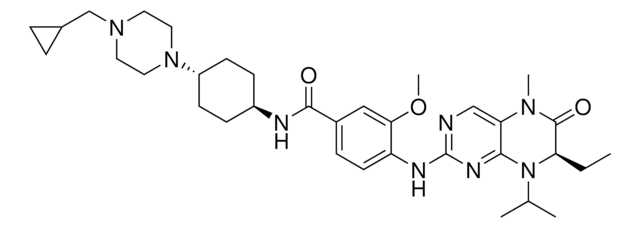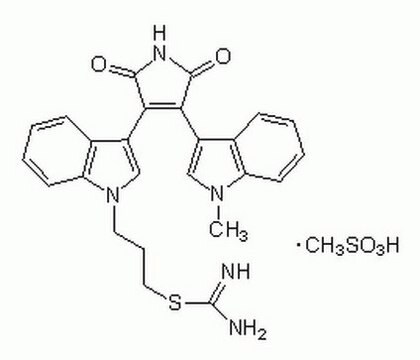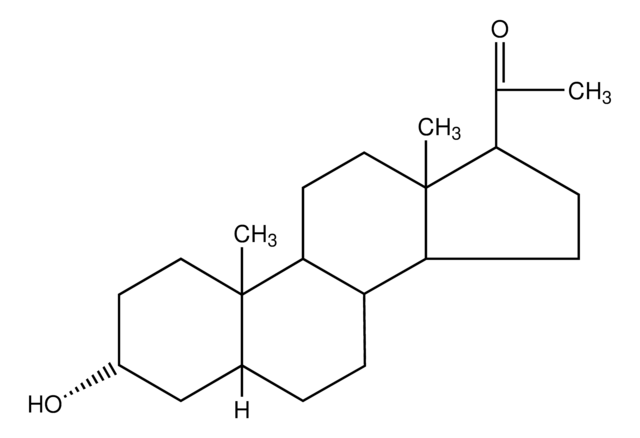G2171
GW843682X
≥98% (HPLC), solid
Synonym(e):
5-(5,6-dimethoxy-1H-benzimidazol-1-yl)-3-{[2-(trifluoromethyl)-benzyl]oxy}thiophene-2-carboxamide, GW843682
About This Item
Empfohlene Produkte
Assay
≥98% (HPLC)
Form
solid
Farbe
off-white
Löslichkeit
DMSO: >10 mg/mL
Ersteller
GlaxoSmithKline
Lagertemp.
2-8°C
SMILES String
COc1cc2ncn(-c3cc(OCc4ccccc4C(F)(F)F)c(s3)C(N)=O)c2cc1OC
InChI
1S/C22H18F3N3O4S/c1-30-16-7-14-15(8-17(16)31-2)28(11-27-14)19-9-18(20(33-19)21(26)29)32-10-12-5-3-4-6-13(12)22(23,24)25/h3-9,11H,10H2,1-2H3,(H2,26,29)
InChIKey
JSKUWFIZUALZLX-UHFFFAOYSA-N
Anwendung
- to study the influence of PLK1 inhibition on Wee1 (G2 check point kinase), cyclin-dependent protein kinase 1 (Cdc2)–Yp15, expression in melanoma cells
- to determine if PLK1 inhibition decreased the survival of hamartin and tuberin deficient cells
- to investigate if inhibitors of PLK1 and aurora kinases have a synergistic antimitotic impact in HeLa cells
Biochem./physiol. Wirkung
Leistungsmerkmale und Vorteile
Lagerklassenschlüssel
11 - Combustible Solids
WGK
WGK 3
Persönliche Schutzausrüstung
dust mask type N95 (US), Eyeshields, Gloves
Analysenzertifikate (COA)
Suchen Sie nach Analysenzertifikate (COA), indem Sie die Lot-/Chargennummer des Produkts eingeben. Lot- und Chargennummern sind auf dem Produktetikett hinter den Wörtern ‘Lot’ oder ‘Batch’ (Lot oder Charge) zu finden.
Besitzen Sie dieses Produkt bereits?
In der Dokumentenbibliothek finden Sie die Dokumentation zu den Produkten, die Sie kürzlich erworben haben.
Unser Team von Wissenschaftlern verfügt über Erfahrung in allen Forschungsbereichen einschließlich Life Science, Materialwissenschaften, chemischer Synthese, Chromatographie, Analytik und vielen mehr..
Setzen Sie sich mit dem technischen Dienst in Verbindung.








